How to Drive on Snow and Ice: Winter Driving Safety Tips

Snow and ice on the road can make for a slippery drive home, and the snowflakes falling from the sky can limit your visibility, so it’s no wonder that there’s a definite increase in insurance claims once winter starts.
“Oh yes, there are many more accidents in the winter compared to the summer,” says Anne-Marie Thomas, an Insurance Expert at InsuranceHotline.com. “Many of them are avoidable too.”
It’s not hard to imagine a sense of overconfidence in many of today’s cars. With just about every car out there outfitted with stability control and ABS, many drivers begin to feel invincible when driving, even in the snow, especially when they have all-wheel drive. However, stability control and all-wheel drive do little to help when you need to brake.
“We see a mixture of claims, like multi-vehicle, and single vehicle collisions,” says Thomas, “But we see a lot of claims in regards to drivers getting rear-ended, or going off because they’re just not paying attention.”
She points out that the number one habit that winter drivers should be following is to drive according to weather conditions. “Check the weather information before you go out, be aware if there is going to be black-ice or lots of snow,” she says.
STAYING SAFE
A key point is to wipe the snow off your car. “Clear the snow and ice of your vehicle, not just the portholes, everything.” She points out that especially in the dark, you need your whole windshield. Having any part of your windows obscured by snow or ice is a serious risk. Clearing snow is a safety measure for other drivers too.
“You need to clear your whole car, blown snow off the roof of your vehicle can obstruct other drivers.”
It’s also advised for those who see snow to get dedicated winter tires. “Statistically winter tires can reduce your braking distance by 25 percent,” Thomas says.
She also mentions to check your tire pressure after cold nights. “Pressure drops in low temperature. You might not be able to steer, or brake as well you think.”
Finally, Thomas explains that it might be handy to have a winter-survival kit to be prepared if anything happens. Her suggestions are not too expensive, and include mostly around-the-house items: sand or cat litter for melting snow. For navigation, keep a compass handy. Some road flares let other motorists know where you are. Extra clothing helps if it gets too cold, along with mitts and socks. In case of a longer term mishap, matches and a candle might be helpful. Finally, keep a pencil and a notepad in your car in case you get into an accident, since pencils work fine in the cold, unlike pens where the ink might freeze or not flow.
“If you’re nervous about winter driving take a defensive driving course,” Thomas advises. Insurance companies won’t sympathize with you if you get into an accident in the winter, even you run into black ice, and couldn’t do anything. She warns, “A car accident can impact your insurance rate for up to six years.”
HOW TO STEER IN THE SNOW
So what exactly do winter driving courses teach to help you avoid an accident in the snow? As a professional drift racer, Max Pourier has an intimate knowledge of how to control a car at its limits and gave a rundown on the basics, first hand.
“It’s very similar, performance driving and driving in the winter,” he explains “You have to stay smooth and try not to upset the balance of the car.”
On a slippery skidpad Pourier shows us just what to do.
His first lesson was to show what happens to a car when it’s understeering.
He explains; “Understeer is when a car’s front tires lose traction during a turn and results in the car pushing forward.”
The car may start to shudder or shake if this happens, but the most frightening thing is the sense of no control as your car goes forward rather than turning.
“You have to go against your instinct of steering more,” says Pourier. “You can stay steady and allow the tire treads to catch up, or unwind the steering wheel a little bit.” Unwinding the steering, allows the tire-tread to align with the direction you want the car to go, and catch traction again.
Another scary bit of driving occurs when the rear wheels lose traction, something called oversteer. When turning, oversteer is quite dangerous because it can cause a car to do a complete spin.
As soon as oversteer is noticed, it’s recommended to counter-steer quickly but smoothly.
“You have to steer back in order to straighten out the car and point it the way you want it to go,” Pourier says. Since the front tires still have grip, you need to use them to your advantage and control the car.
Finally, he demonstrates the importance of winter tires, which are softer in colder temperatures, allowing them to have more grip than all-season or summer tires.
If there’s one important skill to come away with about winter driving, it’s that you should keep your cool. Panicking on the ice and snow isn’t going to help you stop or turn any quicker and can be dangerous. Be sure to drive according to winter conditions and plan ahead by buying a set of winter tires.

Sami has an unquenchable thirst for car knowledge and has been at AutoGuide for the past six years. He has a degree in journalism and media studies from the University of Guelph-Humber in Toronto and has won multiple journalism awards from the Automotive Journalist Association of Canada. Sami is also on the jury for the World Car Awards.
More by Sami Haj-Assaad



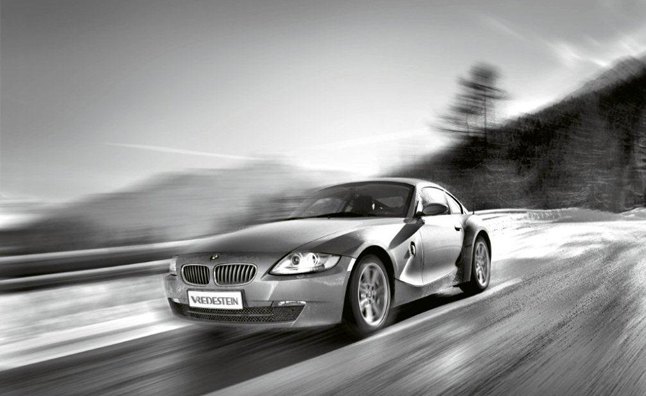

















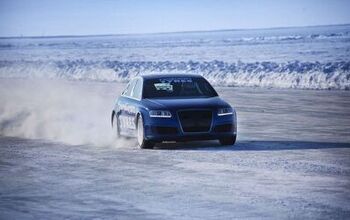
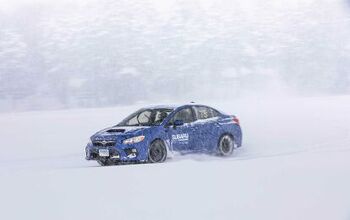

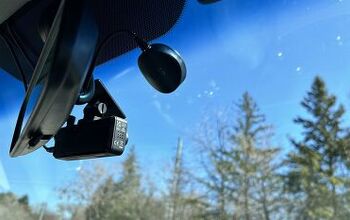





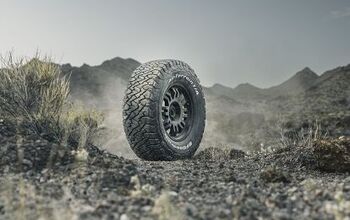




Comments
Join the conversation
I suggest to find an empty mall parking lot and practice steering, breaking, skidding and sliding - no speeding, just experimenting with steering into the skid.
Porsche Cayenne GTS http://gt36.blogspot.com/2012/07/porsche-cayenne-gts.html Lexus IS F CCS-R http://gt36.blogspot.com/2012/09/lexus-is-f-ccs-r.html Mazda CX-5 http://gt36.blogspot.com/2012/09/mazda-cx-5.html Chevy Volt http://gt36.blogspot.com/2012/10/chevyvolt.html Chevy Malibu http://gt36.blogspot.com/2012/10/chevy-malibu.html